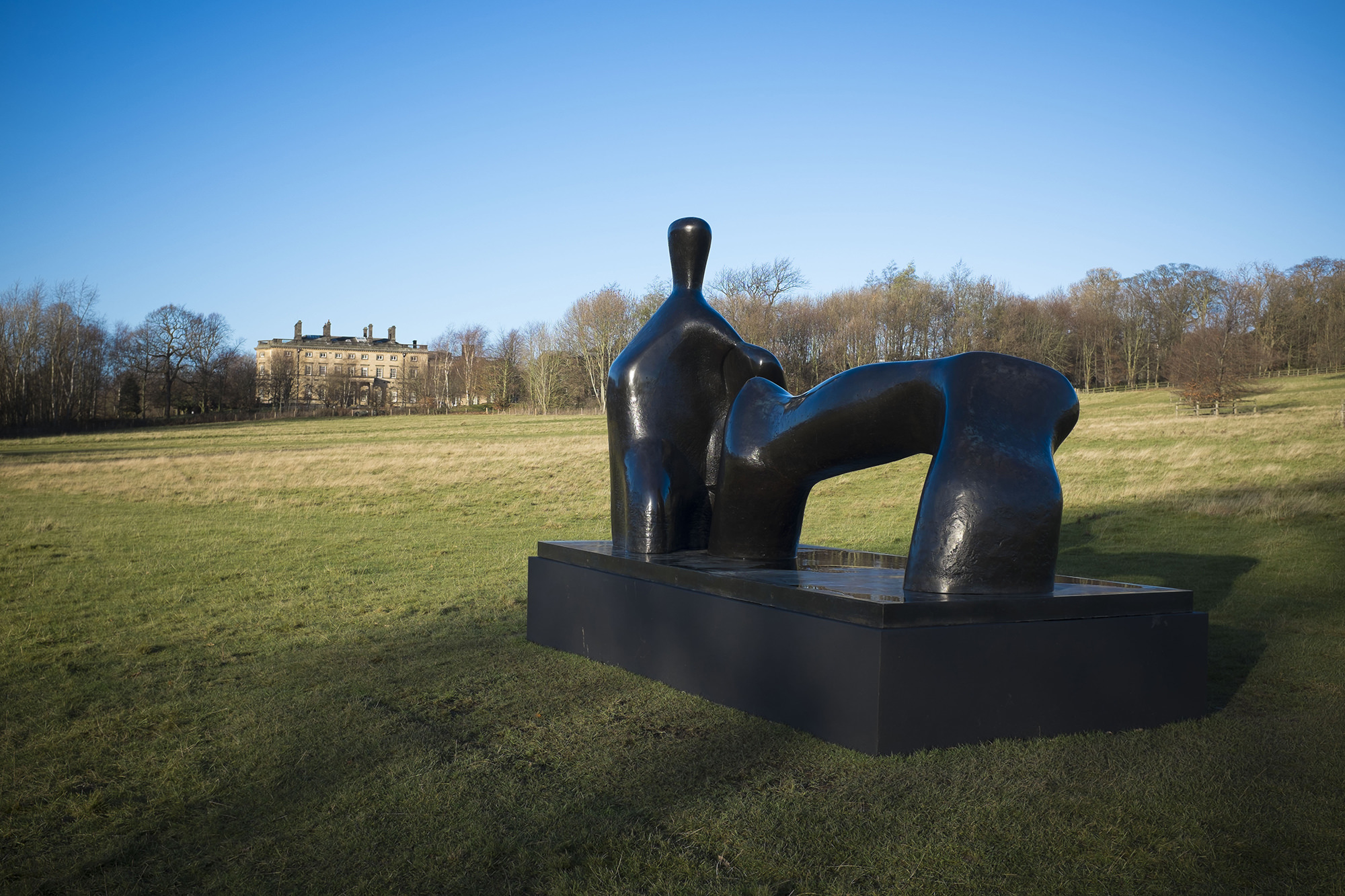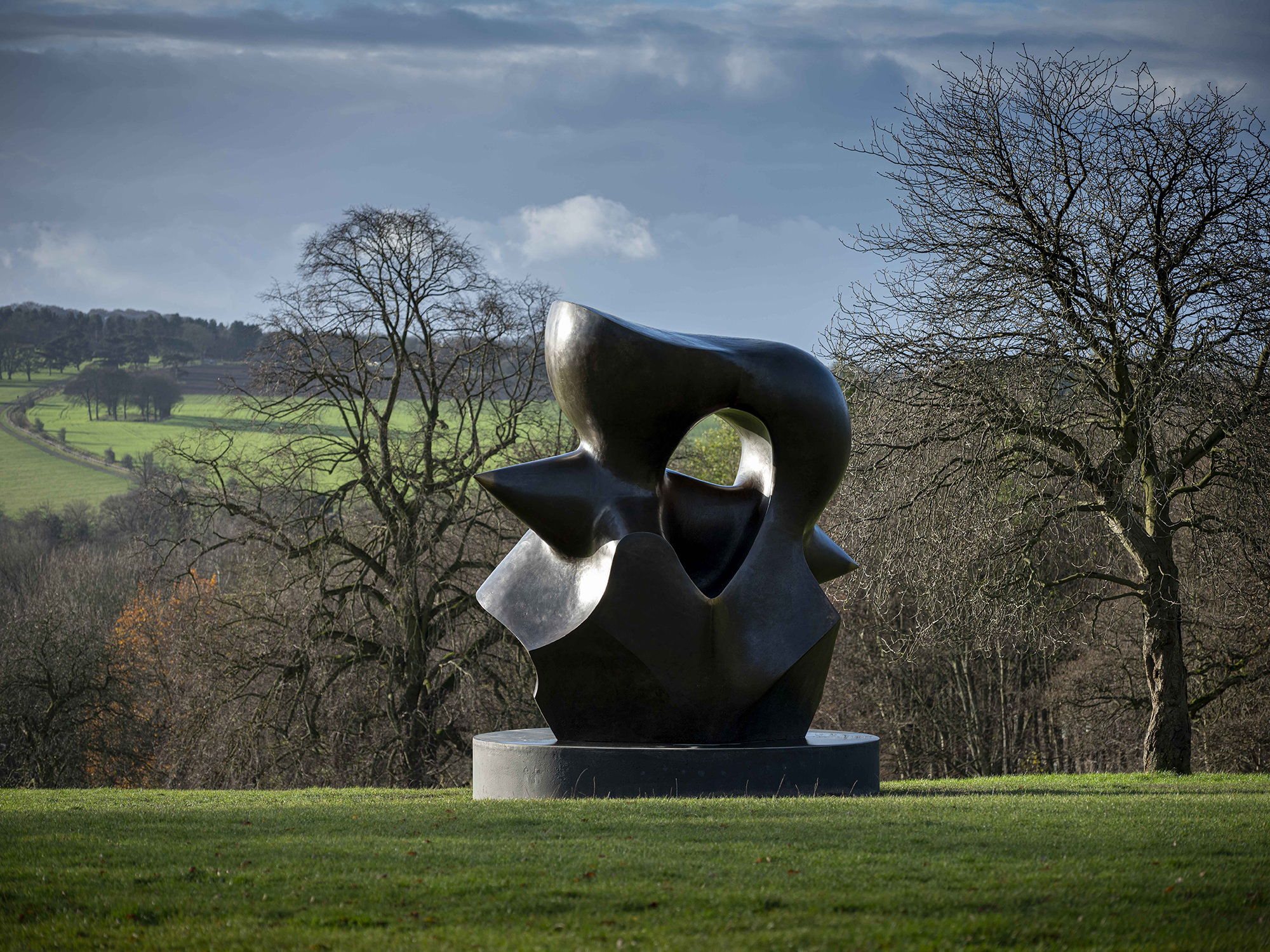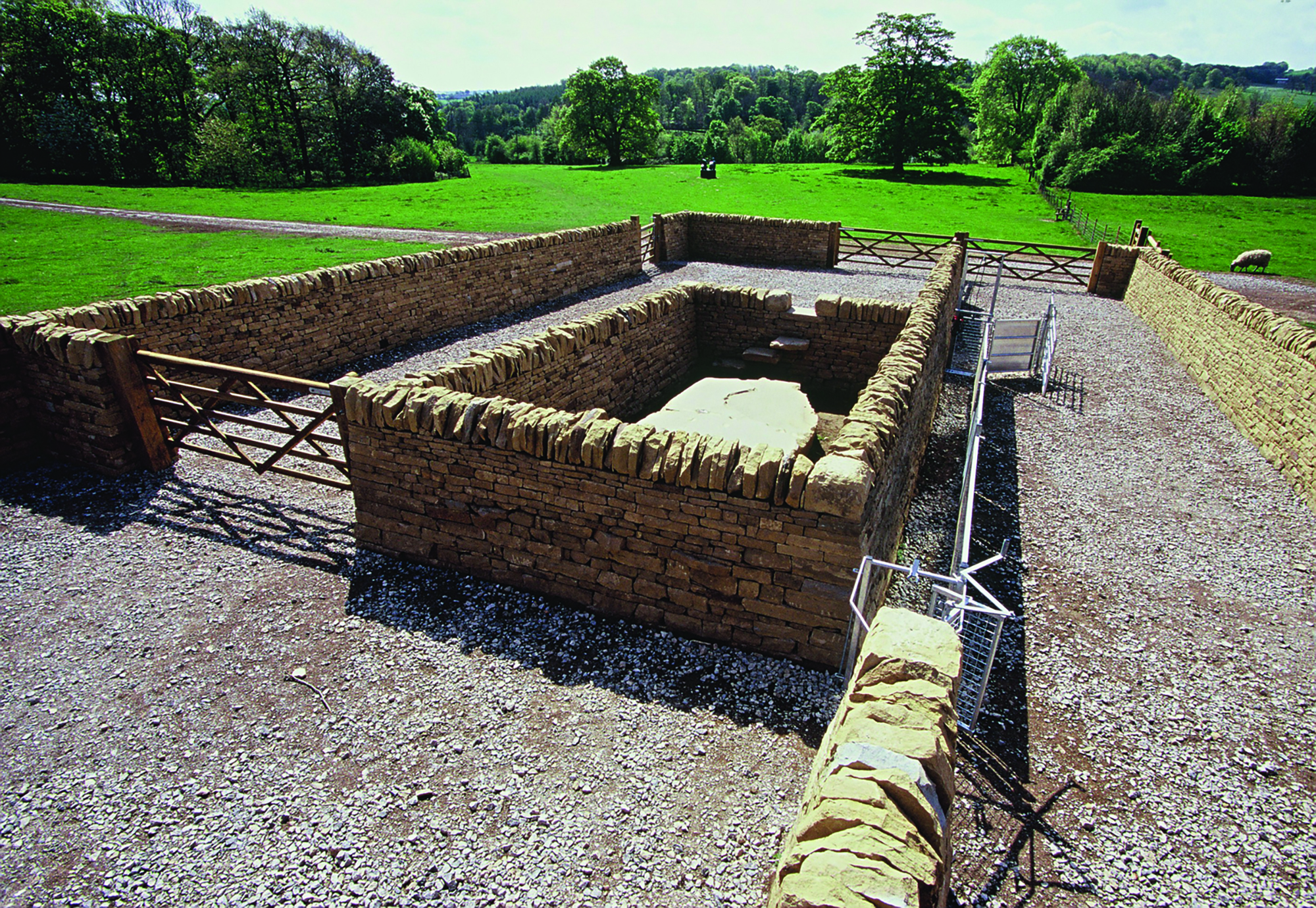
Henry Moore: Large Two Forms
Art Outdoors /Henry Moore: Large Two Forms
Henry Moore was born into a mining community in Castleford and went on to become one of the world’s most celebrated artists. He was the first Patron of YSP and made a promise that there would always be a display of his work here, so close to where he was brought up.
Large Two Forms can be found in the Country Park – Moore’s favourite area of the Bretton Estate, where he enjoyed seeing his sculptures surrounded by sheep.
The colossal sculpture is impressive in both scale and composition, appearing very different from every angle and continuing the theme of points that almost meet, which appears in much of Moore’s work.

Moore’s popularity grew significantly after World War II and by 1950 he was receiving important commissions, notably Reclining Figure for the UNESCO building in Paris completed in 1957.
As Moore’s career progressed, his work began to get larger in size. The public commissions enabled him to significantly increase the scale of his work and he began employing assistants, among them Anthony Caro and Phillip King, allowing him to become more ambitious in terms of size and construction.




You might also like
- Art Outdoors

Henry Moore: Reclining Figure: Arch Leg
Moore’s recumbent figures reflect many different stages of abstraction, with Reclining Figure Arch Leg being highly abstract and comprising two highly simplified forms to suggest a body. Moore often thought of the human figure in terms of landscape, and the reclining position reflects the horizontal bands of earth, sea and sky. The torso and arched leg of this work could be seen as resembling a sea stack and arch as found around the coast of this country. - Art Outdoors
Katrina Palmer: The Coffin Jump
The Coffin Jump was created at YSP in 2018 as part of the 14-18 NOW arts programme for the First World War centenary. Katrina Palmer was awarded the commission to create an artwork and she took inspiration from the role of women during the war, and in particularly the all-female First Aid Nursing Yeomanry (FANY). - Art Outdoors

Henry Moore: Large Spindle Piece
Large Spindle Piece was based on the shape of a piece of flint with protruding points that Moore found near his Perry Green home. It was also greatly inspired by Moore’s fascination with Michelangelo, which had begun almost 50 years earlier. A Royal Academy Scholarship had enabled Moore to travel to Italy in 1925 where he visited the Sistine Chapel. - Art Outdoors

Andy Goldsworthy: Shadow Stone Fold


